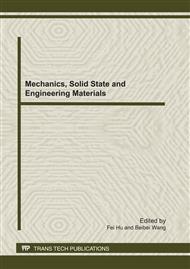p.377
p.382
p.388
p.394
p.400
p.406
p.412
p.418
p.423
Analysis of Lower Leg Injury of Occupant in Frontal Crash Tests Based on China NCAP Protocol
Abstract:
With the popularization of passenger vehicle safety devices such as safety belt, airbag and so on, the chance that occupant’s upper limbs were injured seriously was decreased significantly in frontal impact. However, the injury of occupant’s lower limbs became more and more severe, especially on lower leg injury. 37 groups of test data of China NCAP crash tests including full-frontal rigid crash and 40% offset deformable barrier crash were investigated in this paper, and lower leg injury distributing characteristic of drivers and passengers in these two kinds of crash configurations were obtained. Finally the effect rules of characteristic parameters on lower leg injury were summarized.
Info:
Periodical:
Pages:
400-405
Citation:
Online since:
July 2011
Authors:
Keywords:
Price:
Сopyright:
© 2011 Trans Tech Publications Ltd. All Rights Reserved
Share:
Citation:


